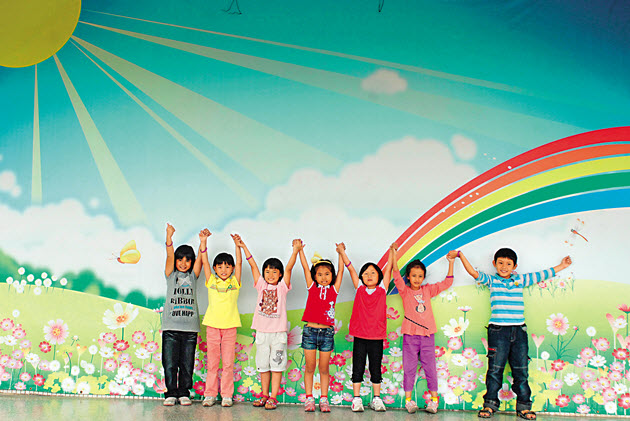Taiwan's Municipal Upgrades
Winners and Losers

Source:CW
Some are greeting Taiwan's new districting system with joy, others with pessimism. How can Taiwan's five new top-tier cities truly leap onto the international stage? And how can Taiwan narrow the gap between city and countryside?
Views
Winners and Losers
By Rebecca LinFrom CommonWealth Magazine (vol. 455 )
Taiwan's biggest jurisdictional overhaul in nearly a century is set to take place at year's end.
From the current system of 25 jurisdictions operating at the administrative level of city/county, Taiwan will soon be divided into a top tier of five "Municipalities Directly under the Jurisdiction of the Central Government" and a second tier of 17 cities and counties.
The capital Taipei already enjoys special top-tier status and will be left largely unaltered by the redistricting, while adjacent Taipei County will become a top-tier municipality with the new name Xinbei City ("New Taipei City"). Kaohsiung City – also already a top-tier municipality – will merge with surrounding Kaohsiung County and thus expand in scale. Two other cities – Tainan and Taichung – will merge with their surrounding counties, expanding in size while also rising to top-tier status.

Recently, CommonWealth Magazine undertook its 2010 Happiness Survey of Taiwan's 25 Cities and Counties. In consideration of the major redistricting soon to take place, analysis of the survey was also divided into two parts – "top-tier cities" and "second-tier cities and counties." The results reveal that Taipei City has topped the happiness rankings for the top-tier cities, while Penghu County lays claim to being the most livable of second-tier cities and counties. (Table 1)
As part of its 2010 Happiness Survey, CommonWealth Magazine made in-depth inquiries into local residents' views of the upcoming redistricting measures. The survey discovered that those Taiwanese living in areas that will receive upgraded status do indeed view the move as a new opportunity for advancement, but those living in areas that will not be upgraded are decidedly more pessimistic, and concerned they will be marginalized after resources are concentrated in other places. Some are even considering leaving home.
A "magnetic effect" is becoming increasingly evident, as the island's biggest and most prosperous cities continue to expand in size and attract ever more resources and talent, while people living in second-tier municipalities feel increasingly disconsolate about the future.
CommonWealth Magazine's Happiness Survey reveals four major findings:
Finding 1: Population density continues to intensify in north/central Taiwan; balanced development is still unattainable.
Despite government hopes for more balanced development, the survey results indicate that the population will continue to move toward concentration in northern and central Taiwan. In over 13,000 telephone interviews, CommonWealth Magazine posed the question: "If you could freely choose, which city or county in Taiwan would you live in?" As in years past, Taipei City remained at the top of the list, followed by Taichung City, Taipei County and Kaohsiung City. Taoyuan County, which will be granted preparatory status to being upgraded as a top-tier city, giving it the same resources and privileges, came in at eighth. Among the top ten, the sole breakthrough was Yilan County, viewed by northerners as their "back garden," which came in at number five. (Table 2)
Finding 2: ‘Magnetic effect' within municipalities widens the urban/rural gap.
Cross analysis of the results show that residents of Taichung City have the highest level of identification with their hometown, with 85 percent choosing Taichung as their top choice of residence, followed by Kaohsiung City at 75 percent and Tainan City at 74 percent. Overall, residents of the eight cities and counties that will be incorporated into the five new top-tier municipalities were sanguine about the developmental prospects of their current cities of residence, expressing a relatively high average willingness to remain of around 60 percent.
But a magnetic effect has emerged among the populations within the same municipality, with people gravitating toward city centers. Even in Taipei County, soon to be upgraded to Xinbei City (New Taipei City), fully 15 percent of residents said they would relocate to Taipei City given the choice. And 10 percent of Taichung County and Kaohsiung County residents said they would prefer to move into Taichung City and Kaohsiung City, respectively. Among residents of Tainan County that expressed a willingness to relocate, however, the number one choice was not Tainan City but Kaohsiung City.
As people continue to concentrate in the city centers of each new top-tier municipality, however, an ever-widening gap will be created between the urban areas and the surrounding townships. As Chen Tung-sheng, a professor in the Department of Sociology at National Taiwan University, notes, resolving the imbalances within the boundaries of each of these jurisdictions will be no easy task.
After the merging of Kaohsiung City and Kaohsiung County, for example, the new municipality will encompass an area running from sea level to 3,000 meters up in the mountains, inhabited by ethnic Han Chinese, Hakkas and several indigenous groups – a diverse and complex jurisdiction running the gamut from bustling urban downtown Kaohsiung to aboriginal villages such as Namasia (formerly Sanmin Township). The bureaucratic organization of Kaohsiung City is far bigger than that of Kaohsiung County, and its developmental model has been urbanization. Now it has suddenly acquired a vast agricultural hinterland, so the handling of the extreme disparities between the two following the merger of city and county can be expected to be fraught with difficulties.
Finding 3: Keelung faces a resident flight, potentially hastening marginalization.
As Chou Chih-lung, a professor at National Taipei University's Graduate Institute of Urban Planning, emphasizes, if the government fails to uphold its responsibility to reallocate resources, those areas not included in the five new top-tier cities are liable to become "globalization disaster zones."
According to the results of the CommonWealth Magazine survey, the biggest loser in that draw will be Keelung. The citizens of Keelung are not only Taiwan's least satisfied residents, but are also the keenest to move elsewhere. Residents holding a negative perception of their home in such areas as education, environment and employment opportunities outnumber those with a positive impression, with only 32 percent saying they would prefer to remain in the city. Only 29 percent say Keelung will be more competitive following the upcoming administrative redistricting, while 55 percent flat out assert it won't be competitive at all. Among respondents in Taiwan's 25 cities and counties, Keelung residents ranked last as to whether they feel their quality of life will improve, indicating an impending crisis of marginalization.
This contrasts with residents of Taichung County, who despite their complaints about the performance of the county government and county chief Huang Chung-sheng, remain full of confidence about the future of their county, with 69 percent believing the redistricting will make it more competitive. Observers point out that additional resources will become available following redistricting, and that has definitely given residents greater expectations for their future. ( Table 3 )
Finding 4: Agricultural counties are anxious; poor counties hope to ‘marry up.'
Although residents of Jiayi City, Jiayi County, Yunlin County and Pingdong County give high marks to their government leaders, they are less upbeat about their prospects for future development. Residents of these areas are less willing to continue living in their current hometowns, with the percentages continuing to hover in a low range of around 50 percent, and just 20 to 30 percent of them feel their areas will remain competitive following this year's redistricting.
The prospect of the reorganized "New Taiwan" has some in high spirits, and others down in the dumps. Taipei County is set to be recast in the new garb of Xinbei City (New Taipei City), and the prospect of merging with neighboring urban powerhouses appears to offer residents of Taichung County, Tainan County and Kaohsiung County the prospects of a rags-to-riches Cinderella story, with a widespread belief it will enhance the competitiveness of those areas. Meanwhile, residents of other traditionally agricultural counties are anxious and uncertain.
The integration of city and county governments will enhance overall capacity for planning and integration. Hopefully, this will give the five new top-tier municipalities a leg up in the competition among international cities and helping them take their place in the winner's circle. What must be avoided is the absorption of resources from other cities and counties that could result in cut-throat competition among the new top-tier cities. Meanwhile, those cities and counties not included in the redistricting plan need to break free of their tendency to simply run in place like a gerbil on a wheel, never going anywhere, if they wish to avoid marginalization. But the appalling state of the nation's finances, limited resources and rigid legal regulations may just become the biggest impediment to the political leaders of these secondary cities and counties in their quest for development. Even though developing Taoyuan as the "city of aviation" is seen as a major national development project, Taoyuan County chief John Wu says the "yolk" of the project – the airport and the free trade port zone – remains under the control of the central government's Ministry of Transportation and Communications, while the peripheral "egg white" is controlled by local authorities. But with investment capital focused primarily on the "yolk" areas, development of the periphery remains difficult. If the central government fails to give up its preferential policies and continues to keep a tight rein on land use, Taoyuan County is in for a rough ride.
Translated from the Chinese by Brian Kennedy
About the Survey
The 2010 CommonWealth Magazine Happiness Survey was conducted between July 14 and August 8, 2010. A total of 13,444 valid responses were obtained via telephone using stratified random sampling. Each of the 25 cities and counties under the jurisdiction of the Taiwan government was surveyed as a separate unit. Valid responses per county and city ranged between 500 and 650, depending on total population.*
The poll had a confidence level of 95 percent and a margin of error of plus/minus 4.4-3.8 percent for each area surveyed. The margin of error for the entire area surveyed was plus/minus 0.8 percent. Statistical representativeness verification and weighted processing were applied to all data, based on gender, residence, age and educational level.
(*Lianjiang County, comprised of the outlying Matsu islands, had 315 valid responses, yielding a margin of error of plus/minus 5.5 percent.)






